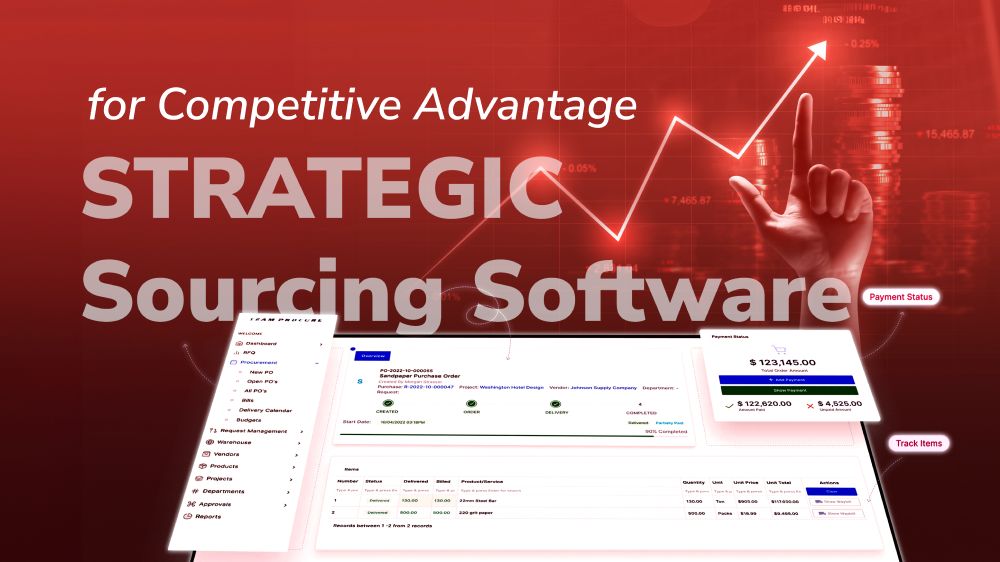Innovation Outsourcing: What Is It All About?

Content Map
More chaptersThe world has turned into a new chapter in which businesses have to innovate to survive and thrive or remain outdated and cast aside. The disruption of Covid-19 has been a case study, and a lot of businesses have learned the lesson the hard way during the pandemic. Undoubtedly, innovation is the corollary of growth, and organizations must learn to harness its power to remain relevant in their industry. Innovation can take place in each and every corner of an organization, and it facilitates improved operation and business. Therefore, companies embrace it as an integral part of their growth in the long run, one way or another. While most middle-tier businesses and large corporations are capable of fostering innovation in-house, many companies, particularly startups, are ill-equipped to tackle innovation internally. As a result, many of them have already outsourced their innovation processes. By partnering with external parties, businesses can have the experts generate ideas and tailor solutions for them. For those who haven’t contracted out your innovative development process, here is an overview of innovation outsourcing.
What Is Innovation Outsourcing?
Simply put, innovation outsourcing is a business strategy to transfer or delegate some parts or the entire innovation process or technology to external teams, ranging from the idea generation for new products or services, the development of strategies for bringing ideas to reality, and the preparation for launching them as some forms of products to the market.
The true idea behind outsourcing innovation management is that it can help businesses to focus on their main strengths and delegate non-core processes or tasks to specialist teams. This way, businesses could avoid wasting time and resources on managing in-house innovation while still benefiting from the value that innovation brings.
It is the ultimate goal of innovation outsourcing that sets it apart from other outsourcing types. While in other outsourcing business models, cost reduction is one of the must-have benefits, innovation outsourcing is more about achieving new ideas for innovation, value, and how to bring the “blueprints” to fruition.
Why Outsource Innovation Management?
Innovation outsourcing has been steadily taking over the role of traditional innovation forms due to a wide range of benefits. Let’s go through a few tangible ones:
Save Time & Costs
A lot of business owners, particularly young ones, often bear a misconception that outsourcing is way more expensive than in-house development and fraught with hidden expenses. However, the reality is quite different because outsourcing may be the most powerful tool to cut costs while securing quality. The “Outsourcing Innovation: The New Engine of Growth” by MIT Sloan Management Review indicates that strategic outsourcing helps to reduce innovation costs by 60% to 90%, which lifts the burden off one business’s shoulder and allows it to prioritize budgets where necessary. Expressly, you do not have to spend wealth on recruiting specialists, building up an infrastructure, and other related expenditures. Outsourcing innovation can quickly give you access to a variety of resources and skills without stretching your budgets. Not to mention the fact that you are risking your investments if the in-house innovation fails.
If a company does not want to sink a lot of money and time into its internal innovation process and then ends up with an inadequate project management system, then contracting out is the way to go. With innovation outsourcing, businesses could focus on their primary goals while still benefiting from the value of innovation without breaking the bank.
As stated before, cost-saving is not the only competitive advantage that one company aims at when outsourcing innovation processes but also time-saving. Thanks to the external collaboration with the right outsourcing partner, companies can shorten the development process by 30% to 50%. The time saved can be used to focus on more important tasks, such as product marketing or sales strategy implementation, or something else.
Access to Diverse Expertise & New Innovative Ideas
In most cases, businesses do not have the in-house capabilities or technical expertise needed to manage the innovation process from start to finish. This is something that innovation outsourcing can help with as it allows you to tap into a larger pool of talent and work with niche professionals who can bring a wealth of knowledge and cross-industry experience to your table. In addition, working with an external innovation team exposes you to new perspectives and innovative ideas, taking your business to the next level. This is because they are not bogged down by your company’s current culture, processes, and ways of thinking, which can sometimes stunt creativity.
Minimize Risk & Failure
Innovation always means state-of-the-art thinking and processes, and it also means “risky.” Therefore, it is understandable that most companies, especially small businesses, fear failure when it comes to internal innovation since they may have to invest millions in research and development. In fact, it is estimated that the innovation failure rate is between 80% and 90%. There are a variety of reasons for the blunder, and they vary case by case. But one thing in common is that failing innovation costs a fortune in not only money, time, and effort but also resources. Meanwhile, businesses can facilitate innovation but do not have to worry about risks and failures by entrusting the hardest business processes, from ideation and development to implementation, to the capable hands of an outsourcing partner. The external teams will take the responsibility to deliver innovation that boosts your company’s operational and strategic performance targets, and there will be less or even no uncertainties as in internal innovation.
Faster Time to Market
Money and time are the two significant factors that can decide the success or failure of any business. When it comes to developing and deploying new products and services, the shorter the turnaround time you can get, the better chance you stand against your competitors and gain market share. Outsourcing innovation management helps to increase the speed-to-market as the innovation team can focus exclusively on developing new ideas instead of getting bogged down by day-to-day tasks.
Derive Benefits from a Mature Process
With innovative outsourcing solutions, you can cut through the chase and profit from mature technology and processes that the service providers have refined and perfected over time. And by outsourcing, you just come in and enjoy it without going through the experimentation. This saves you a fortune and the pains of starting from scratch or reinventing the wheel again and again.
In addition to these, you can leverage other benefits, just like when outsourcing software development or any IT outsourcing services.
Best Practices for Successful Innovation Outsourcing
You have no clue how to make innovation outsourcing work or where to start, don’t you? Fear not; here are some best practices to make it happen:

Determine What to Outsource & What to Keep In-house
The first and foremost decision that you need to make is what aspects of the innovation process you would like to contract out and what you want to keep in-house. It is essential to consider your company’s strengths, weaknesses, culture, business objectives, and other factors when making this decision. Also, you need to set realistic expectations and know precisely what you want to achieve through the partnership. This will make sure that everyone is on the same page right from the start. Furthermore, you should have a clear understanding of your company’s innovation strategy and how the outsourcing project will help you achieve your business goals. Don’t just rely on verbal discussion; get everything down on paper instead.
Get a Competent Outsourcing Partner
The key to success or failure now lies within your partner. Not all outsourcing partners are created equal, so it is highly essential to do your research and filter for the right partner that meets your specific needs. When evaluating potential providers, be sure to check their industry experience, services offered, past clients, and case studies. You should also have a conversation with their sales and account managers to see if they are knowledgeable and can provide the level of service you expect.
If you are lost in the vast ocean of outsourcing vendors out there, check out Orient Software – the top-tier outsourcing company located in Vietnam – one of the top IT outsourcing destinations in the world. With over a decade in the IT industry, Orient Software offers you a complete set of IT outsourcing services and solutions tailored to your specific innovation needs with the utmost quality and at reasonable prices.
Set Up a Governance Model
Innovation is all about trying new things, so it can be challenging to set up a governance model that will work for both you and your outsourcing partner. You need to define the roles and responsibilities of each party, the decision-making process, the communication channels, and so on. By doing this, you can avoid any misunderstanding or conflict down the road and make sure that both sides are on the same page.
Create a Comprehensive Service Level Agreement
Once you have found the right partner, the next step is to create a comprehensive service-level agreement (SLA). The SLA should spell out all the details of the project, including the scope of work, timeline, deliverables, and milestones. Furthermore, it should also include clauses for termination, change orders, and payment terms.
Manage & Monitor the Project Closely
Just because you have outsourced the project, it doesn’t mean that you can sit back and relax. You will still need to manage and monitor the project closely to ensure that it is progressing as planned. Be sure to stay in regular communication with your outsourcing partner and provide feedback on a regular basis.
Evaluate & Measure Results
After the project is completed, it is important to take some time to evaluate and measure the results. This will help you determine whether the outsourcing partnership was successful and if there are any areas that can be improved. Furthermore, it will also give you insights into whether or not you should continue working with the same provider for future projects.







